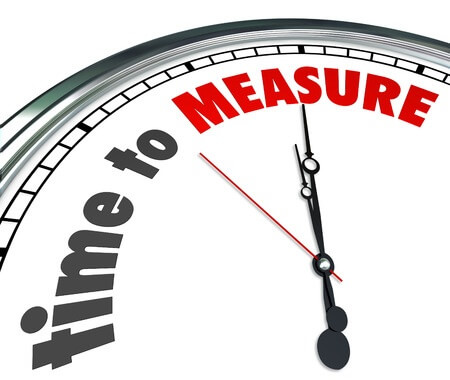Sales Performance Metrics That Will Make You a Sales Superstar
I often get asked what the best sales performance metrics are to measure. This same question can be asked of other disciplines, such as finance, marketing or legal effectiveness, or subjective topics such as personal relationships or career achievement goals.
My answer remains the same. If you are trying to figure out what sales performance metrics you should you measure, the answer is that you should measure what you want to improve.
Our lives today are quite complex. So too is the surrounding digital world we co-occupy, and must work within to earn a living. Gone are the days when you could subjectively assess your performance by just using your gut. If you are serious about improving sales performance, then you must commit to measuring the right metrics to achieve results.

Sales Performance Metrics: Measure What you Want to Improve
What exactly do you want to improve? The answer to this question can depend upon your perspective. If you are a sales professional working as a sole-contributor, then your primary focus might be to make or exceed quota every year. To that end, you need a more focused set of Key Performance Indicators (KPIs) closely aligned to working effectively with the opportunities in your funnel, and to close those deals that part of your region or line of business.
Conversely, if you are a VP of Sales responsible for sales across an entire organization, then your metrics might be broader in scope, with a perspective of utilizing all resources effectively, and working deals through your team’s opportunity pipeline with sufficient velocity and balance across regions to achieve plan.
Different objectives with different sales KPIs are not a bad thing. In fact, I would argue this is the best thing to ensure all are focused on the right activities. If everyone achieves their goal – and they were planned correctly – then the organization should also achieve its goal.
With regards to this article, my focus will be from a VP of Sales’ perspective. But, the concepts apply to you regardless of your role within your organization.
 How Well do you Hunt?
How Well do you Hunt?
No organization can grow without bringing in new customers. So, my first suggestion on what sales performance metric to measure is tied to measuring how many new customers are brought into the organization. I have heard this stated as “new logos” or new customer “wins.” This might be a specific metric, such as at least one per sales rep, or as a percentage of total sales (ex: 40%).
If your sales cycles are long (say 9-12 months), then a longer period of measurement is warranted. The right goal depends on the industry you operate in, its maturity, your relative level of strength in the marketplace as well as how driven your organization is to grow.
I remember working in the wireless phone industry in the late 1990s when it was exploding. Market share was the number one sales metric for AirTouch (which became Verizon), almost regardless of cost. AT&T took a different approach, preferring to measure Average Revenue Per Unit (ARPU) as a measure of sales productivity. Both organizations achieved their respective goals. One led to larger market share; the other higher profitability. Regardless, the right metrics were identified in each organization, and sales execution plans were carried out to achieve the desired objectives.
 How Well do you Farm?
How Well do you Farm?
The opposite of a “sales hunter” is a “sales farmer.” This side of the business is all about taking the time, resources and effort to understand your existing customer base to identify new opportunities. Can new products or services be added or renewed? What can be done to attract sales of new products to extend your footprint within your customer’s organization, perhaps to complement what has already been purchased?
This concept works well with in a Business to Business (B2B) environment, but it also works Business to Consumer (B2C) model. What repeat sales can be achieved for consumer products? How well can you build your brand such that your customers want to engage in repeat purchases? Part of this is marketing, but sales certainly plays a role.
In these type of environment, the sales performance metrics you should focus on are average sales per customer, share of wallet or year-over-year sales to the same account, region, store or product line, with a goal to improve every year.
Of course, if your position is limited to selling to existing customer, then this will be your entire focus. If that is the case, take a closer look at what metrics related to greater success with renewals or adding on new services? Then, figure out a way to measure this metric, and you will be on your way to becoming a sales superstar!
Keep your Customers Happy
Now you have invested considerable energy into building a sales team, identifying the right metrics to measure, finding new customers and selling new products and services to your existing customers. The last piece is how to keep your existing customers satisfied.
It is impossible to grow your business if you keep losing customers at a rate that is higher than adding them. Customer retention is critical to manage the costs of the business. It is always costlier to add a new customer than to sell to an existing one. Relationships and trust must be earned over time before winning the “big” sales, such as an enterprise commitment to go with your solution over the competition.
So, for this reason, it would be good to consider customer satisfaction as a sales performance metric to measure. If you sell your product or service to someone who really isn’t a good fit, or can’t really benefit from your offering, then that customer isn’t likely going to become a new steady source of revenue.
Worse, once they realize they bought the wrong thing or made an error in judgement, they will likely tell others. In today’s digital world where social media can tell a story with breathtaking speed, do you want this person to start telling their story to other prospects? Not likely. A sure way to create a more challenging sales environment – regardless of whether you are in a B2C or B2B industry.
Other metrics to consider tied to customer satisfaction are churn, customer departures or non-renewals. Every customer that leaves might be heading to the competition, so it is important to closely monitor this trend to understand the big picture – are you relevant, priced competitively and offer value to your customers? If not, you will have problems in achieving sales targets.
The cost of acquiring a new customer vs. keeping an existing one is another sales performance metric I would consider measuring. If this relationship starts to change, it might reveal a problem with your customer retention program that might artificially inflate sales performance metrics, and hide a problem with a marketing or customer retention program.
Don’t Forget About Your Co-workers
Sales organizations tasked with a “complex” sale require support from across their organization to close a deal. This support ranges from operations, finance, purchasing and customer support. The entire organization needs to be operating as a “finely tuned machine” to successfully close a big, enterprise wide deal.
Given the importance of having everyone on board and focused on the right end goal, some sort of employee satisfaction goal might make a lot of sense to measure what level it is at, and what changes occur over time. Address any sort of change early, and the impact on closing the next big deal will be minimized.
Conclusion
I hope I have provided a good big picture of how the entire sales process can be examined to truly measure what you want to improve to achieve sustained sales excellence and performance. The first step is always “what do you want to achieve?” With an honest evaluation of this question comes insights into what must then be measured to be improved, and achieve your sales performance metrics.

